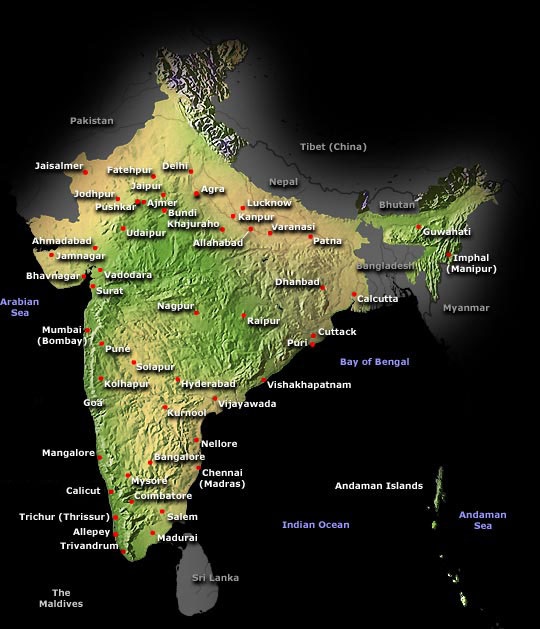July 23, 2007 – Kenya
Another morning flight out of Nairobi. Our new destination: Lamu.
As we were planning our trip to Africa, we received an offer to stay in Lamu. Peter Wheeler, one of Charly’s Social-Impact colleagues, owns an apartment in town. And according to Wheeler, “If you want a funky experience, you have to stay here.” So here we are.
Lamu is the main town of Lamu Archipelago, which consists of six islands. Although it was originally inhabited by Bajun tribespeople, the archipelago has been dominated by Arab culture since the early 16th century. Early Arab settlers exported ivory, tortoise shell, mangrove poles, and African slaves to Iraq, Oman, and other Arab settlements on the East African coastline. Lamu was essentially left untouched by foreigners after 1873, when the British abolished the slave trade, and the economy of the island started spiraling downwards. Other remnants of Arab culture are still thickly engrained in Lamu culture…Islam, Arabic dhows (sail boats), intricately carved wooden doors, and Swahili (which is a mix of Arabic and African tongues).
We landed on Manda Island and were promptly whisked away by Peter’s guys: Seid and Mohamed. They grabbed our bags and ran about twenty meters to a dock, where they tossed our luggage into the rear of a motor boat. Everyone who just stepped off the plane was headed in the same direction—to the dock and into the motor boats, which were all pointed towards Lamu.
The smell of fish intermingled with a bit of sewage greeted us as we pulled up to the Lamu dock. A dozen hands pushed and pulled us onto the dock, and our luggage was passed from hand to hand until it reached the main promenade. We rushed to keep up as Seid and Mohamed weaved through the narrow passageways into the depths of Lamu, all the while shouldering our heavy luggage. We turned left, right, left, past a skinny cat nibbling on a heap of trash, past small girls in veils and little boys in smocks and fezzes, past dark corners smelling of bat guano and urine, past tall walls of coral rock. When we reached Peter’s appartment, we were thoroughly disoriented, and Charly, Alex, and I each had a different notion of which way the ocean lay. We stepped into a courtyard filled with lush bushes and tall coconut trees whose leaves reached higher than the apartment walls. Passageways lead to more passageways and we meandered through the apartment discovering beds and bathrooms in small nooks here and there. It looks like a palace straight from Aladin. There are even three turtles in the courtyard.
After lunch, Seid and Mohamed went home and we decided to venture into town. Which way to sea? We almost considered taking Hansel and Gretel’s tactic and laying down pieces of bread to mark our path, except that all the donkeys would surely eat up our trail. Instead, we took as few turns as possible and eventually came to the main promenade. Everyone sitting on doorsteps along the way saw us walk past them five times: left, right, left, right, left. We had to memorize the route. Finding the way gets ten times more difficult in the dark and we didn’t want to “end up hosed” (to quote Charly) when we came back after dark.
Meandering down the main drag, we came upon a large courtyard in front of Lamu Fort. We sat down beside the locals and observed the scene. Everyone was there: orthodox women with only a tiny slit for their eyes to look out, pretty sandals, and henna-ed feet sneaking out beneath their flowing dresses; chickens in baskets waiting to be sold; a drunken old man; two Masai warriors; light skin; dark skin; donkeys; women in colorful dresses; men talking in the shade; girls jumping around with veils that occasionally fell off and had to be fixed; the intermittent white tourist.
We circled back to the seafront as it became dark. The street lights flickered on and then turned off. Oh well. A few generators were humming in the background and some lucky restaurants boasted incandescent light bulbs. We sat in a pub and had a coke by candlelight and then moved next door to Petley’s Inn for dinner. They make magnificent fruit juices and Swahili-style fish cooked in spicy coconut sauce.
With the help of an L.E.D. flashlight, we found our way back to the apartment where Seid and Mohamed left on some lights for us inside.
The voices of children playing in the alleys outside sound like they are here in our courtyard. I keep turning around expecting visitors and finding none. Even the sound of the coconut leaves in the wind is eerie and reminds me of the swish of robed figures sneaking through the night.
Sunday, July 29, 2007
Subscribe to:
Post Comments (Atom)

No comments:
Post a Comment